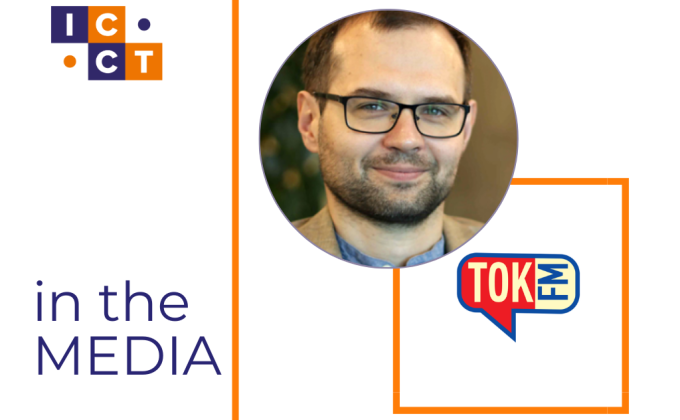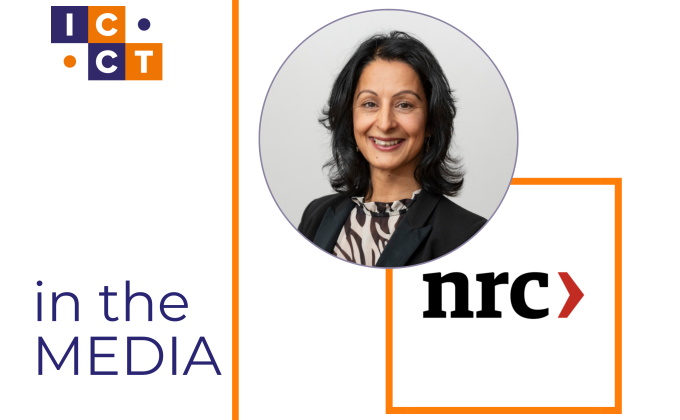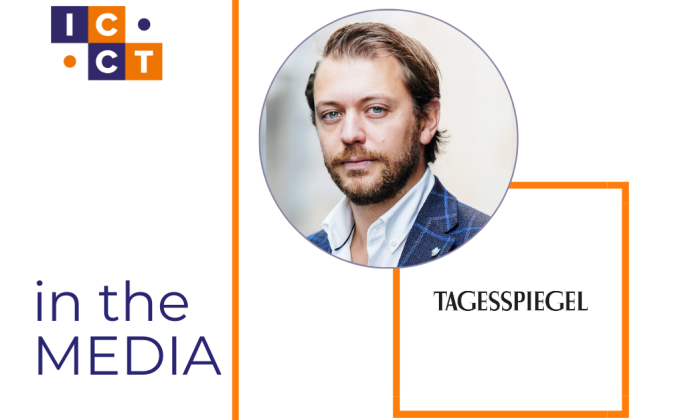On 1 September 2017, ICCT and the Asser Institute hosted a High Level Panel on the topic of Juveniles in Terrorist-Related Activities. Opening the Panel, ICCT Acting Director Dr. Alastair Reed gave a short introduction about ICCT and its yearly Summer Programme on counter-terrorism, of which the High Level Panel is traditionally the last event.
Speaking at the event were Nikita Malik (Centre for the Response to Radicalisation and Terrorism) on the assumed role of children within so-called Islamic State (IS); Céline Glutz (Switzerland Federal Department of Foreign Affairs) on the implementation of counter-terrorist juvenile justice measures in Europe; Lili-Anne de Jongh (International Juvenile Justice Observatory) on the practical challenges local authorities face regarding radical juveniles in the Netherlands; and Liesbeth van der Heide (ICCT & Leiden University) on the various response approaches during rehabilitation and reintegration processes.
The Children of IS
Nikita Malik began the panel by presenting a report that identified three ways children are currently being used by IS. The first depicts one of the most prominent uses of children by IS: as tools of propaganda. Malik explained that the repeated image of cheerful children being educated in classrooms and schools enables IS to portray itself as a functioning and highly structured state. By presenting children as a focal point in their propaganda, IS creates an incentive for people to join with their families. This ‘sophisticated’ use of children is one we have seen before, under the authoritarian regimes of Hitler and Saddam Hussein. Nonetheless, within the 254 pieces of propaganda that were analysed for Malik’s research, the most common theme was that of violence: 33% of children were seen either participating in or normalising violence in school settings. Her findings show that the majority of these children are coerced into joining from refugee camps, and that 80% are actively recruited from displacement camps and conflict-ridden areas.
Under her key findings, Malik went on to describe two further uses of children by IS. Grooming networks, which are traditionally vertical, have now shifted horizontally. This implies that children are used to radicalise other children. Finally, there is mounting evidence that children are given both combat and non-combat roles. Recent trends show that children are increasingly used as vehicle suicide bombers and that this is not only limited to IS.
Malik concluded her presentation by emphasising the changes that need to be made to current policy practices. Better assessments, better safety and better supportive networks have to be implemented to de-radicalise and re-educate the children that were born within IS. However, it remains to be seen who will take full responsibility for those with IS birth certificates.
Juvenile Justice in a Counter-Terrorism Context
Following Nikita Malik’s discussion, Céline Glutz explored the legal framework within which the issue of children in the justice system has been addressed in Europe. Following a GCTF initiative in 2015, the operational challenges involving juveniles within the justice system were revisited. As a result, the Neuchâtel Memorandum on juvenile justice was created, which establishes a good practices international framework based on a holistic approach. However, given that the United Nations Security Council Resolution (UNSCR) 2178 on children has received little attention since its inception, Glutz emphasised the continued need to address how children should be handled within the judicial system in a counter-terrorism related context.
The prevailing goal of the juvenile justice system is to preserve public safety while upholding the rights and needs of children. The knowledge that children below a certain age cannot be held fully responsible for their behaviour affects the criminal proceedings in question. Juveniles that are still in the early stages of development do not necessarily understand the full consequences of their actions. Therefore, the juvenile system must adapt to the challenges posed by prosecuting children, while continuing to satisfy accountability.
Glutz argued that measures should be implemented to ensure age of criminal responsibility is not set too low, and that it is uniform for criminal offenses within a country. This stems from the notion that the younger the child, the less you can blame him or her for any offence. Glutz continued by emphasising that justice proceedings should be tightly monitored via surveillance and media communication, while uniform procedures for arrest and interviewing must be established. In addition, effective reintegration and rehabilitation can be facilitated by increasing the rights of children during the proceedings, including their participation, their right to be informed of charges, access to council and incriminating evidence, and the right to privacy. Lastly, stigmatisation must be avoided and alternatives to imprisonment introduced to improve the reintegration process of juveniles.
Rehabilitation and Reintegration Programmes
Speaking next, Van der Heide’s presentation outlined which developmental factors must be taken into account to ensure effective reintegration. Developmental differences between adults and children are associated with impulsivity, vulnerability and social context. Young children do not have fully developed cognitive functions, which can result in impulsive decision-making. Secondly, the distinction between perpetrator and victim is difficult to determine, especially when children are more susceptible to indoctrination and recruitment than adults. Lastly, social context offers insight into how children are peer pressured into terrorist activities, particularly as they are more susceptible to socialisation. All these factors affect whether children can be held fully accountable for the terrorist activities they are involved in.
Van der Heide explained that treatment responses should be dependent on internal and external indicators. If children internalise their past, research has shown they run a greater risk of engaging in criminal activity as adults. On the other hand, children who externalise their experiences by actively engaging in violent behaviour at a young age are less likely to become deviant later in life. Whether children internalise or externalise experiences affects attitude, another indicator for deviance. Those that have a more tolerant attitude towards violence are more likely to become violent later in life. Nonetheless, although young children are more susceptible to indoctrination, they are also more receptive to treatment.
Lastly, Van der Heide acknowledged that care must be taken not to re-radicalise young offenders during rehabilitation programmes. Placing children that have been convicted of terrorist offences in the same institution may result in unsuccessful rehabilitation if they continue to re-radicalise each other. Similarly, placing indoctrinated juveniles among other offenders may result in juveniles becoming radicalized.
Practical Experiences with Radical Juveniles
Last to speak was De Jongh, who introduced her topic by stating that the Netherlands has seen 40 juveniles travel to Syria, a third of whom are under the age of 25. These ‘cubs’ can be seen as not only a danger to the EU, but also as victims for the acts they have been forced to commit under threat. Cases of ‘homegrown’ juvenile terrorists are equally difficult to handle, as they usually come from broken homes, suffer from mental disorders and can be recruited on and offline. Unlike Foreign Terrorist Fighters (FTFs), these juveniles are not ‘professional’ or networked, and are consequently even harder to trace.
Practitioners are therefore faced with huge challenges; de Jongh admitted that much of what has been done so far has been achieved on a trial and error basis. Further complicating matters is the wide array of actors that are involved in the rehabilitation efforts. The existing general approach usually involves a first encounter, a risk assessment and finally, treatment and monitoring. This is all done through the cooperation of multiple agencies including the municipality, the police, safe houses and childcare protection agencies.
De Jongh argues that although counter-terrorism measures are still framed in security terms, prevention, social care and welfare measures must be included in the conversation to improve reintegration. She concluded her presentation by offering several practical recommendations. Firstly, practitioners must be better trained and practical support must be improved in order to understand the perspective of the child. Secondly, specific prisons for juveniles involved in terrorist activities should be built, while resocialisation must be emphasised. Above all, prevention, training and cooperation are essential in any approach.



